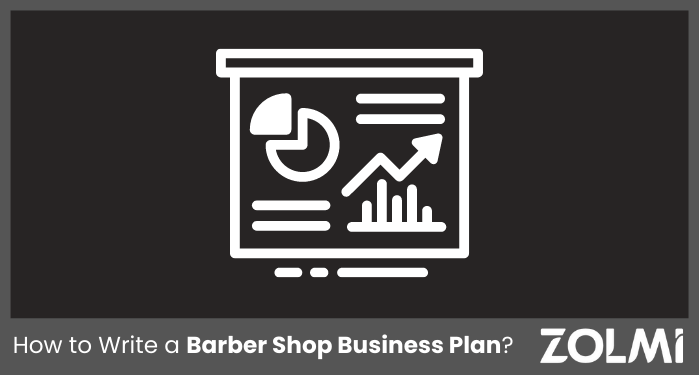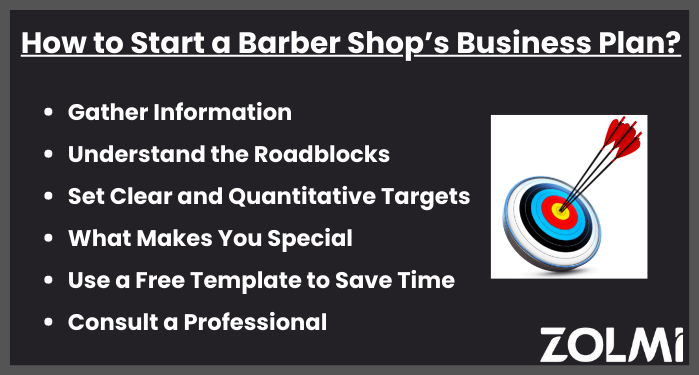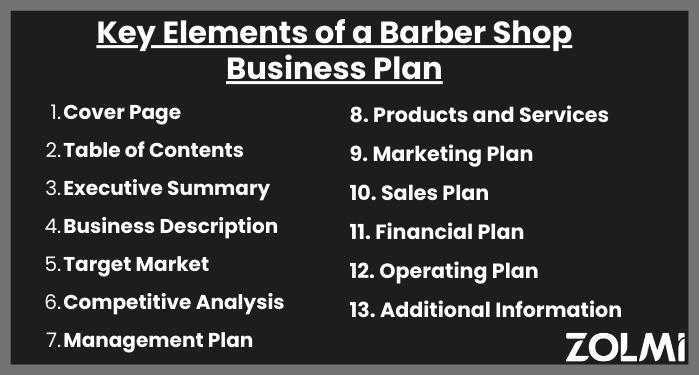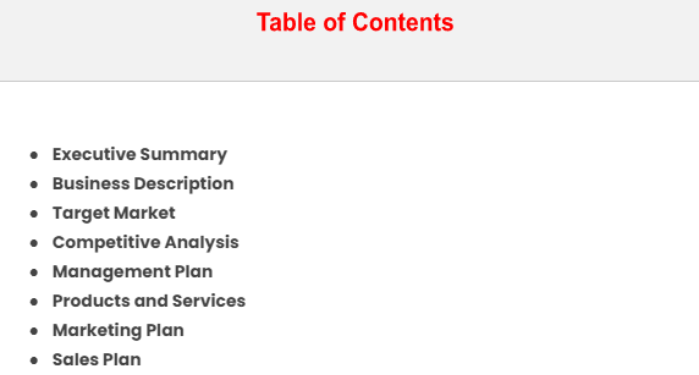How to Write a Barber Shop Business Plan in 2024?


Having a detailed and professional barber shop business plan is important for anyone working on opening a new barbershop. It can also be an excellent roadmap for growing your barber business.
We’ll take a look at the basics of researching and creating your barbershop business plan, plus some helpful info and a free template to help you get started.
Every business is different, and a lot of the elements of your own business plan will be informed by your target market, location and the services that you offer (or plan to expand into).
A business plan is a living document that you can adjust or update as needed. It will include information about the barber shop’s financial, marketing and management details.
This will include your startup costs (if you’re planning to open a new shop), plus market research, your mission statement (more on this later) and your strategy for success.
You’ll also include an executive summary at the beginning, details about your target market and marketing plan, plus a description of your products and services.
Most plans also include information about training and support for your team, plus your management structure.
In order to write a plan for your business, you’ll have to conduct market research, decide on a long-term vision for future growth, write out a sample budget and set clear and achievable goals. You may also want to include supporting documents such as an income statement.
The management team and owners can use the business plan as a road map to make sure the barber shop is achieving these goals, as well as make informed and data-based decisions about staffing, advertising or even equipment purchases.
This isn’t limited to the salon industry. Business plans are documents that will help any enterprise be (and stay) successful.
You can use yours as a guide when you’re making new business decisions like which services to promote, how to market your barber shop, and even what training to offer staff members.
If you’re hoping to secure funding or attract investors, it’s essential that you have a solid business plan ready to show them- this helps them see the “big picture” of your vision as well as the practical details.
You can provide accurate information about your prospective clients, promotion strategy, revenue and budget. You can also identify any potential roadblocks early in the startup process and have some ideas of who your barbershop’s competition will be.
In addition, the vision and mission statements, as well as the targets you’ve set will make it easier to lead effective staff meetings and keep everyone motivated and focused on hitting your goals.
It’s a way to stay ahead of your competitors and create better strategies that adapt to a dynamic industry and the changing needs of clients and staff members.
Every business plan is as unique as the barber shop it represents, so don’t worry if this all seems a bit intimidating to try and create the perfect business plan at first. All good plans have some things in common.
They start with a business overview, describing your target clients and your services. Then, include revenue-related information such as a budget, projected sales and break even points.
You’ll also outline your marketing plan to expand or develop the number of customers, potential barber shop expenses and your financial plan as a whole.
Business plans for a new barbershop will also detail the startup costs and your plan for getting financing, whereas a plan for an existing barbershop will show people how your business stands financially, including supporting documents like a cash flow statement and revenue projections.
Let’s take a closer look:
Your barbershop business plan will help every step of the way, whether you’re trying to attract new investors, adjusting your pricing strategy or deciding on equipment or hiring and training staff.

It breaks down the business’s finances and long-term goals, making it easier to stay focused on the big picture and plan for success.
Some things to keep in mind are:
Once you know these things, you can use barbershop management software to track your team’s performance and make sure you’re meeting the targets.
Consider hiring a consultant or even a business advisor to check the financial details, marketing strategy or even help you create the executive summary. This is especially important if you’re planning to present this to investors later.
Here are some of the things that a barbershop business plan should include:
This will be your first impression, so make sure it looks professional. It’ll be seen by investors, management staff and pretty much anyone with an interest in your company. It should have:
Business plans should be organized and easy to navigate. A clear table of contents is essential for this. Divide and label each section clearly so it’s easy to find information.
Your executive summary should be clear and concise- it needs to be easy to understand, informative and give readers a strong first impression. Include the following:
Describe your target clientele and why you’ve chosen them. Some things to consider are:
You might want to conduct a SWOT analysis for your barbershop (strengths, weaknesses, opportunities and threats) to help you understand all of these things in more detail.
Understand the market and what you can do to be successful.

Your barber shop management plan will explain how the business operates. This includes things like:
This will give investors and financial professionals an idea of your shop’s income, potential expenses and profits, and will also help you to identify future roadblocks or potential areas of opportunity. Explain:
Be as detailed as possible, explaining your prices, the costs associated with each item on the list, the time they’ll take (if it’s a service) and the profits you’ll make. If you’re already in business, you can also include details about the popularity of each one, too.
How will you reach new customers and grow your business? What advertising methods will you use? What are the costs associated with each one?
You can give a basic outline here, but be sure to do your homework and be ready to put this plan into action.
You’ll want to include:
Make sure that this includes both your retail products and services you offer. Identify and explain:
For a new barbershop, this will include startup costs and how quickly you intend to become profitable, but existing businesses should include expenses and funds needed for any improvements such as renovations, equipment or new training, as well as profit projections.
Documents to prepare include:
One of my top tips when preparing this is to have a professional go over it or assist you during the process. They can help ensure everything is accurate and provide any advice you might need.
Explain how your barber shop will be run, including:
You can include any other information here that investors or managers may need, including:
Any documents (such as a balance sheet, for example) that you need to reference in your business plan, can be appended here.
Do not miss our post on barber shop license.
We’ve done our best to help you by including a free barbershop business plan pdf template that you can use and adjust as needed to create your own.
Your free barber shop business plan template will look like this.

Do not miss our post Barber Shop Price List.
Opening a new barber shop or growing an existing one takes a lot of time, energy and know-how, but having the right business plan in place makes everything easier.
Just like having the right staff and equipment, your barbershop business plan makes it easier for an owner or manager to keep everything on track, identify potential issues or opportunities for the company and make informed decisions.
How to write a great business plan
https://ieeexplore.ieee.org/iel3/46/14446/00660335.pdf
The successful business plan: secrets & strategies
https://books.google.com/books?hl=en&lr=&id=hpFxjEsZLUwC&oi=fnd&pg
Institutional forces and the written business plan
https://journals.sagepub.com/doi/abs/10.1016/j.jm.2002.11.002